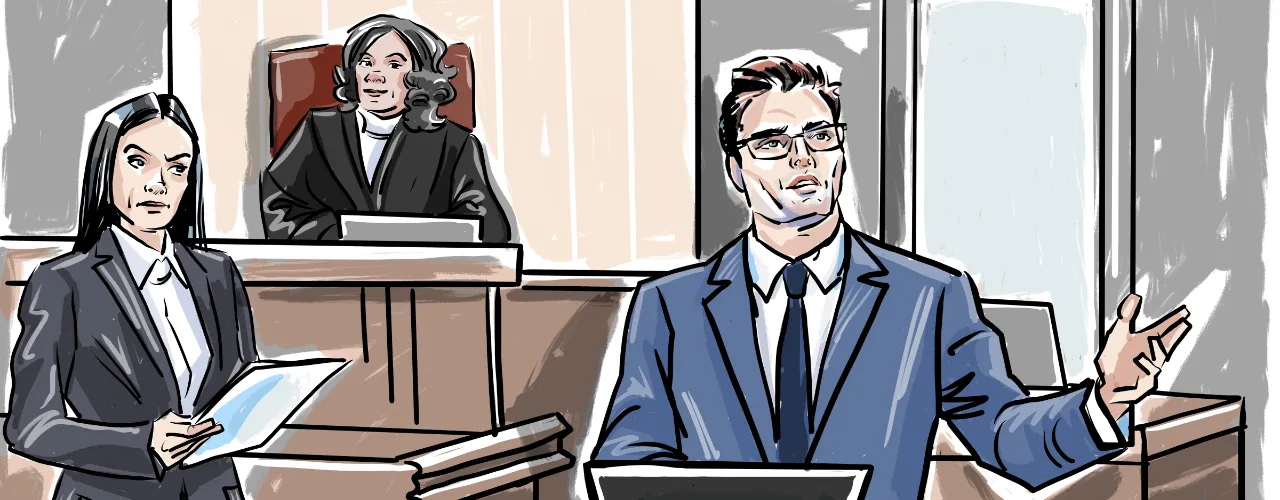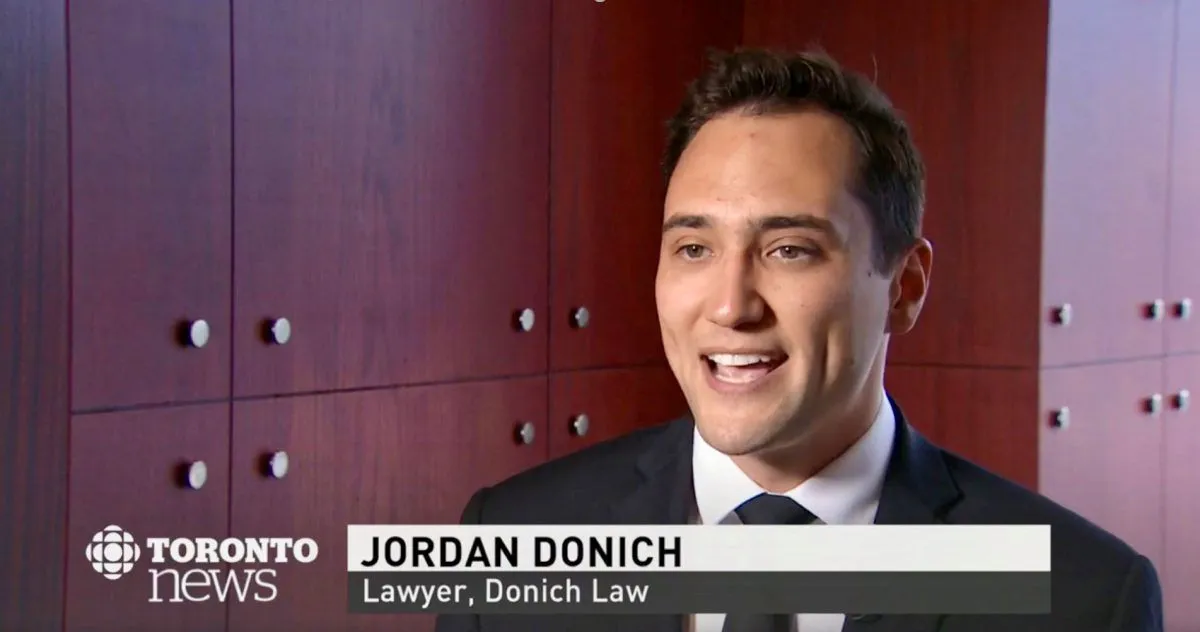
Defend Child LURING Charges
Crime Statistics
Child Luring charges are some of the most serious offences in Canada. As a general rule, the Crown is required to seek upper reformatory penitentiary time. Only in exceptional circumstances can courts deviate from this mandate. As technology has become more readily accessible, especially with young people, online sex offences against children have continued to rise.
Courts have been sending a strong message that anyone convicted of child luring will face significant custody and the sex offender registry. Statistics Canada collects data on the changing demographics associated with this offence.
Our Experience
Child luring is a serious offence enumerated in section 172.1(1) of the Criminal Code. It occurs when a person, using a computer or telecommunications device, attempts to facilitate an offence with an underage person. The age of the complainant, the age differential between the complainant and the offender, as well as the intended offence may all be factors in determining the proper sentencing for child luring. Child luring can happen with a real child, where the offender attempts to solicit sexual services or child pornography. Police will aggressively arrest these individuals because of the public safety danger they may pose. Specific restrictions related to being around children will also be imposed by the court, these are known as s.161 bail conditions. These conditions will also interfere with the accused’s ability to live with or be around their own children.
In 2019, the Internet Child Exploitation (ICE) unit of the Peel Regional Police in Brampton charged 36 people with child-related sexual offences. In 2018, they charged 46 people, and in 2017, they charged 48 people. Recent advancement in technology and storage have created investigative strain for forensic experts, with terabytes of extracted files analyzed. As of 2019, the Peel Regional Police also have one full-time dedicated officer who investigates child luring offences in the region. If you or your loved one is under investigation for child luring in Brampton, there can be serious reputational harm done to the family. Internet Child Exploitation Police can sometimes execute aggressive search warrants in the residence of the accused, seizing electronic devices. Getting legal advice early and a publication ban is important to protect the reputation of the accused.

- Toronto Star: Pornhub and Revenge Porn.
- Toronto Star: New Corporate Liability for Child Pornography in Canada.
- Toronto Star: Police Power and Social Media Companies.
- Global News: Can an airline tell you to stop recording and delete a cellphone video?
- Métro Montréal: Avec le temps chaud, il n’y a pas que le mercure qui grimpe: le nombre de cas de voyeurisme aussi.
- CityNews: As the temperatures outside get warmer, police say the reported number of cases of voyeurism tend to rise.
- VICE News: An Image Site is Victimizing Women and Little Can be Done.


The Firm handled one of Brampton’s highest profile child luring stings on Locanto in its R. v. P.E. [2021]. The accused was having a conversation with who he thought was an adult that later revealed themselves to be under age. It later turned out he was actually communicating with undercover police operatives. The Firm advanced an entrapment application after conducting a Dawson hearing, examining the officer in charge. A forensic analysis of the electronic devices seized also proved the accused was questioning whether the person he was talking to was in fact a young person. The Crown initially wanted penitentiary time given the gravity of the offence. Just prior to trial and after 2 years of litigation, the Firm was able to secure the withdrawal of 3 luring charges by presenting recent caselaw related to entrapment by the same officer in charge, in another case. This was sufficiently damaging enough to the case for the Crown to pull the charges and resolve the proceeding without custody. Including reelecting to proceed by summary conviction.
The Firm also resolved one of Toronto highest profile child luring investigations where the accused, a TTC Driver was charged with 9 child sex offences in its R. v. A.H. [2016]. It was alleged that he was visiting the young person while on the job and developed a relationship. The parents of the child discovered the meetings and conversations which were allegedly happening. The case was highly publicized and the accused suffered incredible shame within his employment circle and neighborhood. This can often happen even though the accused is presumed innocent, the court of public opinion can swiftly deliver its own judgement. Over a period of time, the Firm was able to in fact show there was no sexual relationship, that the complainant was a distressed young person who simply developed a friendship with a the bus driver. All child sex charges were withdrawn, the accused’s marriage was saved and his reputation eventually restored.
Online Sex Offence are on the Rise in Canada
We have also represented serious sex offenders with a history of allegedly preying on young people to either exploit them for sexual services or extract child pornography. These can be challenging cases to defend, given the strong public interest in their prosecution and punitive sanctions. Even if an offender is guilty, the defence can often litigate the matter to reduce jail sentences or the number of charges. The defence can also assist with rehabilitation which will increase the odds of early parole or avoid a dangerous offender designation.
When the Firm defended the accused in its R. v. T.T. [2022], the accused was charged with 10 sex offences related to children. It was alleged the accused was targeting young people online, trading child pornography to extract sexual abuse material and minimizing to severity of his conduct. The Crown was close to proceeding with a dangerous offender application and seeking double digit penitentiary time. There was overwhelming evidence in the proceeding, including the accused allegedly revealing his true age to an unknown complainant. The accused had a family with children to further complicate the proceeding. The Firm relied on procedural defences given the overwhelming forensic evidence produced by the Crown. After lengthily litigation, the Firm secured a withdrawal of most of the charges through a s.11(b) Charter argument which resulted in a significantly reduced sentence.
Law Newbie is a free AI research assistant that can help you safely answer questions about criminal law.




Frequently Asked Questions
Common Bail Conditions Associated with Child Luring in Brampton?
When the accused is released on bail pending trial, there are conditions the Court imposes on the accused to ensure the safety of the community. Though the accused is innocent until proven guilty, a criminal charge is still a matter that the authorities take very seriously.
When charged with child luring or any sexual offence involving a person under 16, a common bail condition may be a prohibition order barring the accused from accessing children. This means that the accused is not allowed near children alone. The offender may be prohibited from attending public communal areas where minors are present or can be expected to be present. They may also be barred from employment or volunteering opportunities that involves being responsible or in a position of trust and authority over a child.
An internet ban may also be present. This bars the accused from accessing the internet completely or unless certain conditions are met. The Court may order conditions such as a requirement of supervision by a surety, lack of a virtual private network, no communication with minors.
How Does the Crown Prove Luring?
In order to prove the accused did commit the offence, the Crown must prove beyond a reasonable doubt that they are guilty. Different subsections of section 172.1(1) of the Criminal Code require different proof.
In all child luring offences (child luring under 18, under 16, and under 14) the Crown must prove three elements. First, that the accused communicated with the complainant by means of telecommunication. Second, the accused communicated with a person under the age of 18 or someone who they believed was under the age of 18. Third, the accused’s purpose or intent of communication with the complainant was to facilitate the commission of an enumerated offence in the Code. These offences vary dependant on the age of the child and the subsection of the Code.
For section 172.1(1)(a), child luring under the age of 18 years, the specified offences are: section 153(1), sexual exploitation; section 155, incest; section 163.1, child pornography; section 170, parent or guardian procuring sexual activity; section 171, householder permitting prohibited sexual activity; sections 279.011, 179.02(2), 279.03(2), which are human trafficking offences; section 286.2(2) and 286.3(2) are related to commodification of sex.
For section 172.1(1)(b), child luring under the age of 16 years, the specified offences are: section 151, sexual interference; section 152, invitation to sexual touching; section 160(3) bestiality in presence of or by child; 173(2) exposure to person under 16; 271, 272, 273 are all sexual assault; and section 280 criminalizes kidnapping of a person under 16.
For section 172.1(1)(c), child luring under the age of 14 years, the specified offence is section 281, abduction of a person under 14.
What Are the Penalties for Child Luring?
There are two main categories of criminal offences in Canada: summary conviction offences and indictable offences. Indictable offences are viewed as more serious with harsher sentencing. Child luring is a hybrid offence that the prosecutor can elect to proceed either by summary conviction or by indictment, depending on various factors of the case. If the Crown elects for a summary conviction, the minimum penalty is 90 days incarceration, while the maximum is two years less a day. Given an indictable election, the minimum penalty is one year incarceration, and the maximum is 14 years.
In addition, as child luring is a primary designated offence, the offender may be subject to additional ancillary orders. For example, section 487.051(1) of the Criminal Code instructs the Court to make an order adding the offender’s DNA to the national database. Section 161.1 is a prohibition order that restricts the offender’s access to children. In addition, the offender will also be subject to the Sex Offender Information Registration Act, requiring them to register under it.
What If My Address Was Linked to This Activity but More Than One Person Lives in My Residence?
Investigative techniques by the police may lead them to a location without specifically leading them to the person committing the act. If a person in a residence with multiple people is engaged in child-related sexual offences, all devices will be examined. Then, using forensic evidence and interrogation, the police will ascertain who was the owner of the offending device and arrest and charge the offender. In many cases the police already have the evidence before entering the home since it was acquired when they received a tip.
What Kind of Information Will the Police Try to Get Out of the Accused During Interrogation?
Section 8 of the Canadian Charter of Rights and Freedoms guarantees a suspect’s right to be secure against unreasonable search and seizure. This means that the police must obtain a search warrant from a judge before searching a suspect’s residence and seizing their devices. The police will also require a search warrant to search inside the accused’s devices. The suspect may also be interrogated after the arrest regarding their involvement in the offence. This may include attempting to get the accused to confirm details the police are already aware of.
Other secondary offences such as child pornography and sexual interference may be connected with child luring. The police will attempt to get any information regarding secondary offences out of the accused. They may lie to the accused about the information they have in order to get the accused to confess.
Recent Cases
R. v. Braithwaite, 2023 ONCA 180
In the Ontario Court of Appeals case of R. v. Braithwaite, the appellant was convicted of child luring. He sought to appeal this conviction. The appellant saw an ad from a girl claiming to be 19. When the girl revealed she was 16, the appellant believed she was old enough to consent. The girl was actually an undercover police officer. After arriving at the agreed upon meeting place, the accused was subsequently arrested and charged.
The appellant argued that he was not trying to obtain sexual services but was doing research for a book. In addition, he testified that he had erectile dysfunction and could not engage in the discussed activity. The trial judge found there was no air of reality to this testimony and rejected the appellant’s claim. The appellant appealed, arguing that he received insufficient counsel. However, the Court found a possibility of entrapment, and ordered a new trial to ensure there is no miscarriage of justice.
R. v. Fardshisheh, 2023 ONSC 1334
In the Ontario Superior Court of Justice case of R. v. Fardshisheh, the accused was convicted of one count of procuring a person under the age of 18 to provide sexual services, one count of luring, and one count of obtaining sexual services of a person under the age of 18 years.
The complainant was 17-years-old when the offender directly messaged her on the social media app Instagram. The offender clearly knew she was underage. He offered her money in exchange for sexual services. The complainant filed a victim impact statement, detailing her struggles since meeting the offender. Due to the mitigating factors of a first-time offence, the offender was sentenced to 36 months incarceration. In addition, the offender was sentenced to a SOIRA order, a DNA order, and a no contact order barring him from communicating directly or indirectly with the complainant.
R. v. Cooper, 2023 ONSC 875
In the Ontario Superior Court of Justice of R. v. Cooper, the accused pled guilty to ten counts concerning child-related sexual offences. Using false identities and multiple social media accounts, the offender distributed images of child pornography, made and possessed child pornography, and telecommunicated with several young girls for the purposes of committing sexual interference and child pornography.
During sentencing, the Court considered several aggravating factors. A significant aggravating factor was the age differential between the victims and the offender. The offender was 39 years old, while his victims were as young as 13 years old. The offender violated the victims’ sexual privacy as well as their innocence. These offences also all required considerable planning and foresight. In addition, child pornography was discovered on several of the accused’s devices. The offender lacked true insight into the offence and had no concrete treatment plan for the future. The total sentence imposed was four years and 362 days in prison. In addition, ancillary orders for a DNA order, a SOIRA order, and a s. 161 order were entered.













